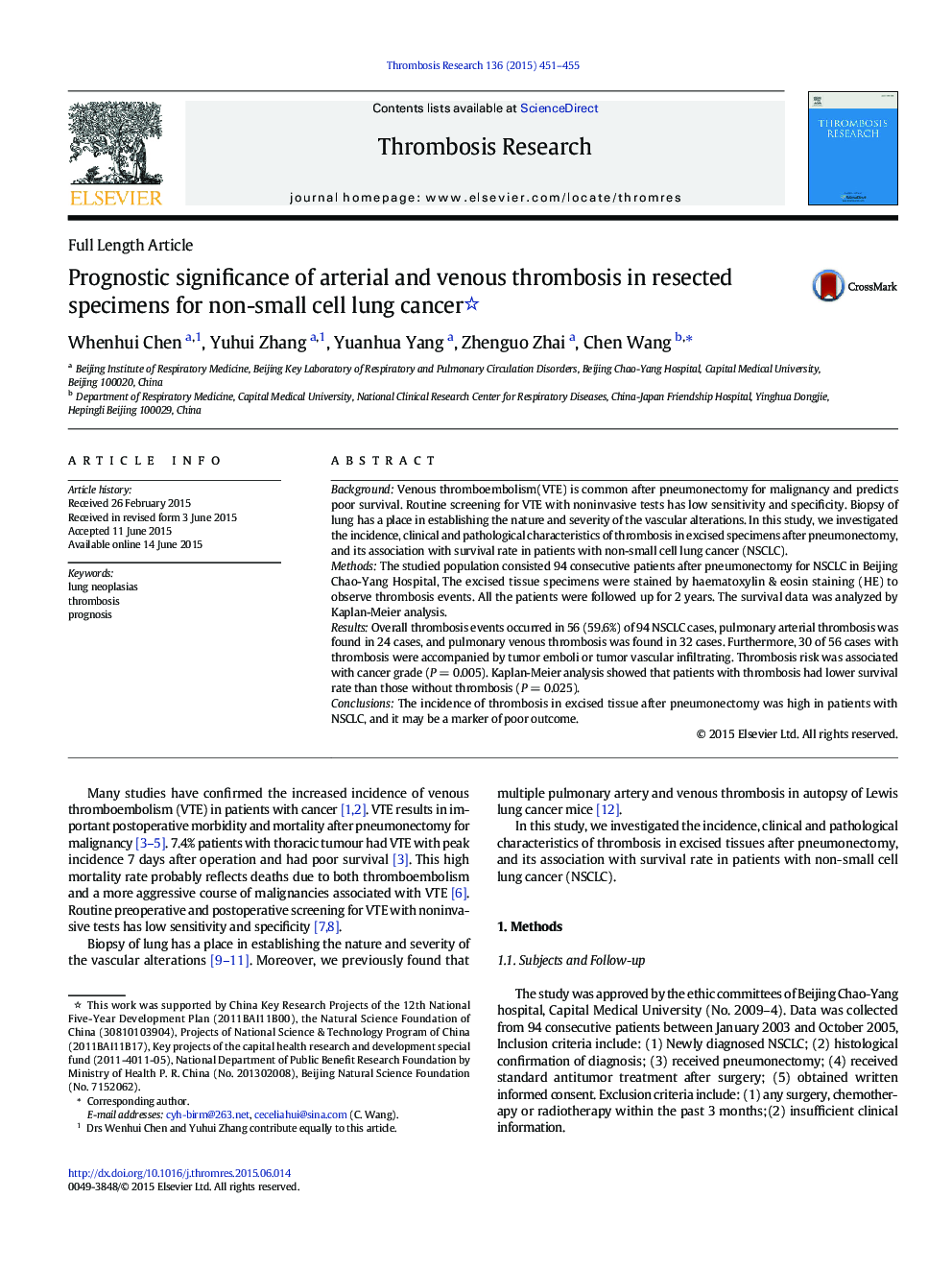| Article ID | Journal | Published Year | Pages | File Type |
|---|---|---|---|---|
| 6001344 | Thrombosis Research | 2015 | 5 Pages |
â¢The incidence and pathological characteristics of thrombosis in excised specimens.â¢Both arterial and venous thrombosis were found in the excised specimens.â¢Thrombosis was often accompanied by tumor emboli or tumor vascular infiltrating.â¢The survival rate was lower in patients with thrombosis.
BackgroundVenous thromboembolism(VTE) is common after pneumonectomy for malignancy and predicts poor survival. Routine screening for VTE with noninvasive tests has low sensitivity and specificity. Biopsy of lung has a place in establishing the nature and severity of the vascular alterations. In this study, we investigated the incidence, clinical and pathological characteristics of thrombosis in excised specimens after pneumonectomy, and its association with survival rate in patients with non-small cell lung cancer (NSCLC).MethodsThe studied population consisted 94 consecutive patients after pneumonectomy for NSCLC in Beijing Chao-Yang Hospital, The excised tissue specimens were stained by haematoxylin & eosin staining (HE) to observe thrombosis events. All the patients were followed up for 2Â years. The survival data was analyzed by Kaplan-Meier analysis.ResultsOverall thrombosis events occurred in 56 (59.6%) of 94 NSCLC cases, pulmonary arterial thrombosis was found in 24 cases, and pulmonary venous thrombosis was found in 32 cases. Furthermore, 30 of 56 cases with thrombosis were accompanied by tumor emboli or tumor vascular infiltrating. Thrombosis risk was associated with cancer grade (PÂ =Â 0.005). Kaplan-Meier analysis showed that patients with thrombosis had lower survival rate than those without thrombosis (PÂ =Â 0.025).ConclusionsThe incidence of thrombosis in excised tissue after pneumonectomy was high in patients with NSCLC, and it may be a marker of poor outcome.
